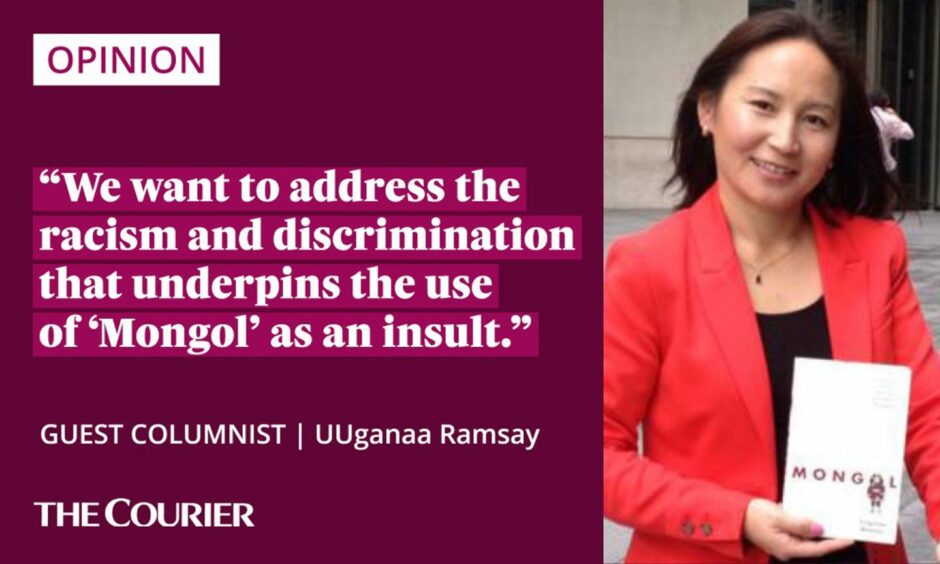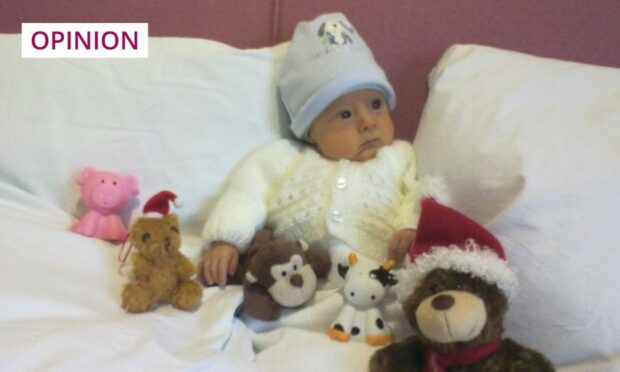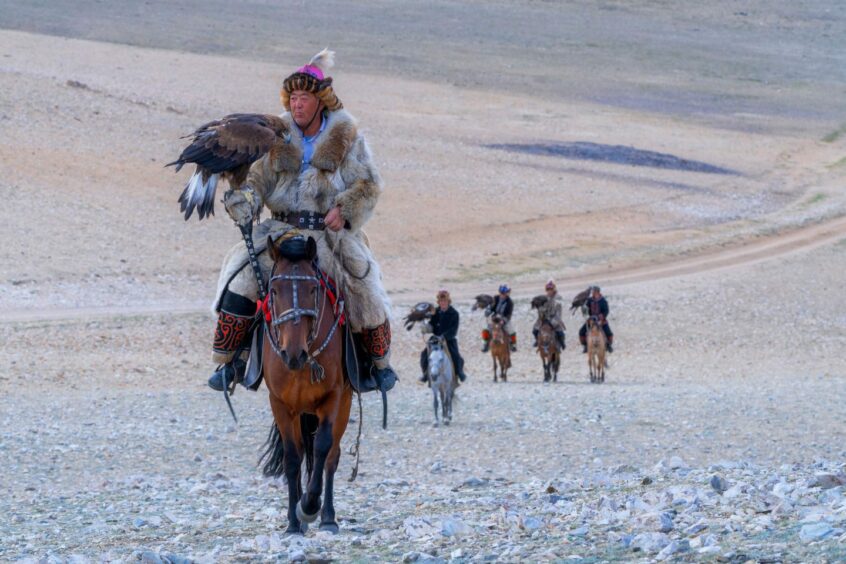Twelve years ago, I held our Scottish-Mongolian son Billy in my arms and said goodbye.
Little did I know his short life would change ours forever.
Billy was part Mongolian. He also had Down’s syndrome.
And in the years since his death, I have come to realise how much language matters in our everyday life.
Words shape who we are, who we think we are and who we say we are.
It’s why I went on to found the Scottish charity Mongol Identity, which works to advance a greater understanding of the word “Mongol”.

We want people to understand that this term refers to an ethnicity and culture with its own history and language – and to end its historical misuse.
It’s why – along with other campaigners – I have spoken up to protect children of Mongol origin and ethnicity.
And why we continue to work to call out the outdated and offensive derogatory meaning of the word Mongol.
Mongol insult is still in use
Its use as an insult – to describe people with Down’s Syndrome, or to imply that someone is an idiot – persists today.
F1 driver Max Verstappen was widely criticised for using the word Mongol in an outburst following a collision during practice at the Portuguese Grand Prix in 2020.
The Mongolian government wrote to motor racing’s governing body, the FIA, to complain about his “racist and derogatory remarks”.
More recently, our group spoke out when French rapper Orelsan, 39 – real name Aurelien Contentin – threw around the world Mongol as an insult in his song, The Smell of Gasoline.
It was a clear example of cultural appropriation and the damage that causes to people of Mongol origin and those with Down’s syndrome.
Roots date back a century and a half
The association dates back to the mid-1800s when Dr John Langdon Down attempted to describe the genetic condition that now carries his name.
Down drew on two strands of pseudo-science prevalent in Europe at the time.
Ethnic classification attempted to delineate ‘races’ in terms of physical traits.
The other, phrenology, posited that the shape of a person’s head was an indicator of their character and intelligence.
Down said patients shared the same facial characteristics of the ‘Mongoloid’, a 19th century racial classification which was applied to people from Mongolian, Chinese and Japanese background.
His 1866 paper entitled ‘Observations on an Ethnic Classification of Idiots’ coined the term ‘Mongolian Idiot’ to describe people born with Down’s syndrome.
The phrase passed into standard medical terminology.
And so, the association between Mongol, Down’s syndrome and idiot was born.
Concerns were raised half a century ago
By the mid-20th century, it was widely recognised that this term was not only inaccurate but deeply insulting both to people with the genetic condition and to people from Mongolia.
A letter to The Lancet signed by eminent geneticists and physicians in 1961 proposed that the terms Mongolian idiocy, mongolism, and mongoloid – with their misleading racial connotations – be replaced by Langdon-Down anomaly or Down’s syndrome.
But more than 60 years on, the word Mongol is still being used to imply someone is an idiot.
The Meaning of Mongol documentary is still available to listen on @BBCiPlayer#Documentary#History#wednesdaythoughthttps://t.co/RHIMAHEJXr pic.twitter.com/OiFHt9EmCy
— Uuganaa Ramsay 🌐 (@Guuye) August 31, 2022
And this is what Mongol Identity is striving to correct.
By educating and furthering an understanding of Mongol culture, we want to address the racism and discrimination that underpins the use of ‘Mongol’ as an insult.
Your freedom of speech, my freedom to exist
As I get older I want to be more forgiving. To see things from different angles.
Yet I am still the same person I was 12 years ago.
I still don’t like bullies, or self-centred clowns who make money and gain fame at the expense of others. Particularly when their targets are from a minority background, or for reasons such as disability or ethnicity.
Quite often, it’s down to ignorance. Too often it’s because of arrogance.
And it’s why I will not accept that attempts to stop the use of offensive words and phrases are “political correctness gone mad”.
Freedom of speech may be a language issue for you. But for some of us it is a matter of life and death.
Uuganaa Ramsay is an award-winning author, campaigner and advocate, who was born in Mongolia. She won the Scottish Asian Women’s Award For Achievement in 2014. Her memoir Mongol won the Janetta Bowie Chalice Non-Fiction Book Award from the Scottish Association of Writers and led to a documentary produced by BBC Radio 4 and BBC World Service, titled The Meaning of Mongol. She will continue her journey representing Mongol Identity at the United Nations, Geneva next week when she attends the “Empowering civil society representation at the United Nations” programme.
This piece is published as part of the Pass The Mic project, which aims to provide a platform in the Scottish media for women of colour.













Conversation